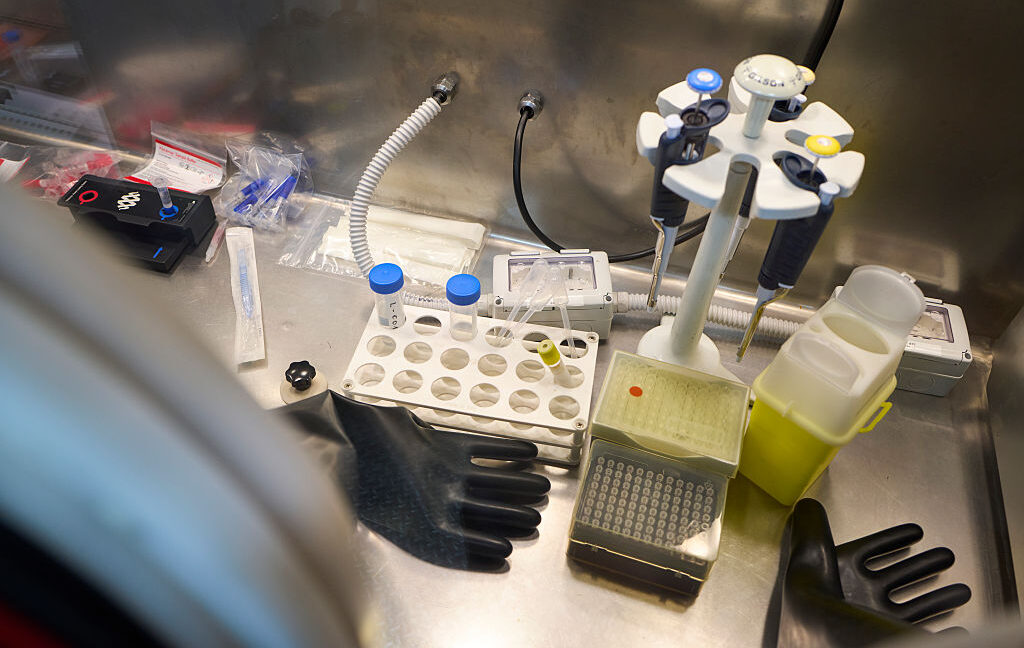Summary
The proposed federal budget cuts would significantly impact biomedical research and development, potentially hindering the creation of new drugs that could benefit public health. Researchers have studied the potential effects of these cuts by identifying grants that might not be funded under a reduced NIH budget and analyzing their contributions to newly approved drugs.
The Impact of Budget Cuts on Biomedical Research
The proposed federal budget would see drastic cuts made to most of the agencies that fund science, with a 40 percent slashing of money going to the National Institutes of Health (NIH) being particularly concerning. This reduction in funding would severely harm biomedical researchers and the industries that rely on them, ultimately affecting public health.
To better understand these potential consequences, some researchers have attempted to quantify the indirect effects of such budget cuts. They’ve analyzed which grants wouldn’t have been funded had similar cuts been made earlier in this century and tracked their impact on drug patents. Their findings suggest that development of roughly half the newly approved drugs relied on work that was funded by a grant that would need to be cut.
Grants, Drugs, and Patents
The NIH operates a system where each grant submission gets a priority score after evaluation and discussion. Grants are then funded starting from the top-scoring grant and proceeding down the list until the budget is exhausted. Using data on every priority score between 1980 and 2007, researchers were able to identify which grants would be dropped due to a 40 percent cut in funding.
It’s possible that some work funded by these "at risk" grants might have been done regardless, but with the NIH being the largest supporter of biomedical research globally, there aren’t many other options available. The researchers decided to focus on the societal impact using one of the key outcomes of biomedical research: drugs.
Tracing the Pathway from Grant to Patent
The law governing patenting of federally funded research requires researchers to report any patents arising from their work back to the federal government. Patents also allow for the citation of scientific publications, which can be traced back to grants. The team started with the 557 drugs approved between 2000 and 2023 and looked at relevant patents issued prior to a drug’s approval.
Those patents were checked for citations of NIH-funded research or direct filings with the government. The simplest test is how many directly acknowledge support from an at-risk grant, which turned out to be 14, or 2.5 percent. While that number seems low, only 7 percent of drugs in total directly acknowledged NIH support, meaning at-risk grants represent a substantial proportion of that.
Direct Acknowledgments and Citations
Just about anything you do in biology now is based on decades of work done elsewhere, some of which may be absolutely essential to the final piece of research leading to the patent. This type of intellectual contribution is likely to show up as a citation rather than a direct acknowledgment. The researchers next focused on these citations.
It turned out that nearly 60 percent of patents cite NIH-funded research, and at-risk grants put in a very good showing with just over half of patents citing at least one at-risk grant. Note that many grants will have citations from both categories; to get a better sense, the researchers looked for patents where at least a quarter of papers cited arose from NIH-funded research.
For any grant, this number was about 35 percent; for at-risk grants, it was around 12 percent. Looking at specific examples, researchers found that some approved drugs relying on at-risk research were used for cancer treatments and genetic disorders – treatments likely to have a significant impact on public health.
Economic Activity and Public Health
There are a couple of reasons to think this might be an underestimation of the impact. To begin with, their source data on funding priorities stops at 2007, leaving a roughly 15-year gap where research funding can’t be analyzed but patents are still being filed. Additionally, drugs are just a small part of potential NIH research impacts.
The researchers acknowledge excluding "a wide range of important medical advances that may also build on NIH-funded research," including vaccines, gene and cell therapies, diagnostic technologies, medical devices, innovations in patient care practices, and surgical techniques. Beyond the obvious implications for public health, these sorts of patents can result in significant economic activity, such as launching new businesses.
Implications for Scientific Progress
Beyond informing current debates about science funding, this research makes a larger point about scientific progress. We tend to focus on major leaps forward and high-profile scientists that drive them, highlighted by the upcoming Nobel Prizes. However, the reality is that most advances, especially in biology, are built on a broad intellectual foundation of lower-profile work requiring years for someone to find a way to apply it to something patentable.
Broad cuts like these may mean that scientific superstars still receive grants while leaving a field devastated by having parts of this foundation knocked out from under them.

